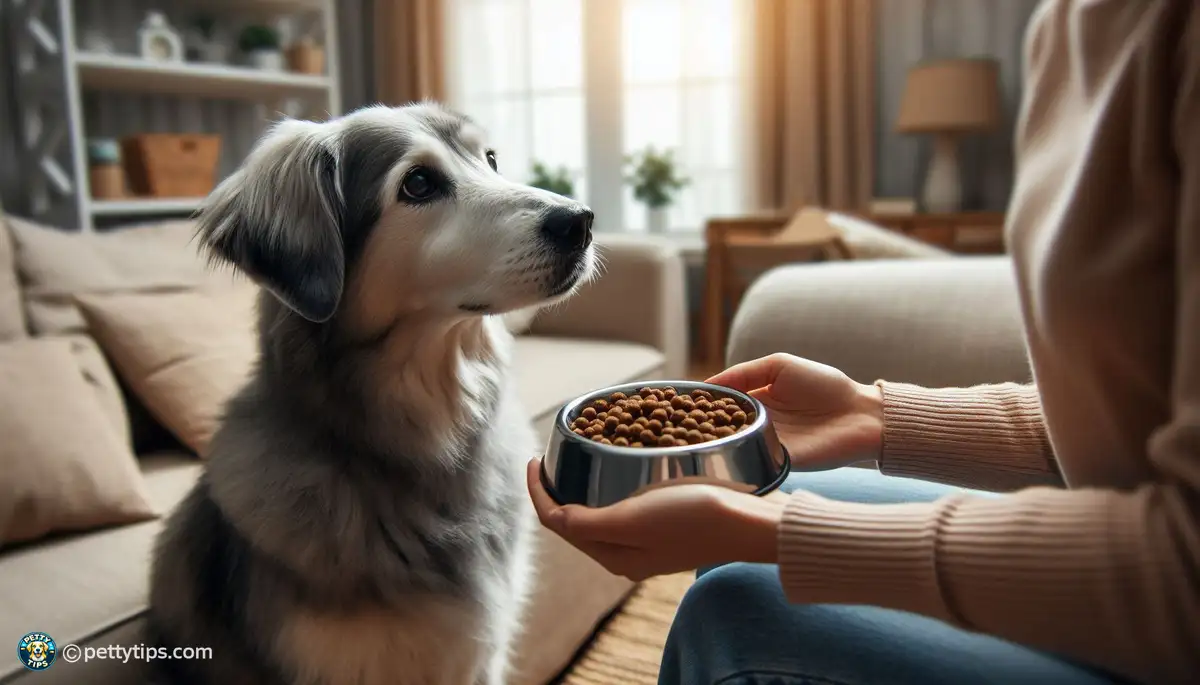
The Hidden Dangers: Top 10 Foods That Can Harm Your Pets Health
Sandra Vega - Oct 12, 2024 - 7 min read


As pets age, their nutritional needs change. Just like humans, senior pets require a diet tailored to their specific needs to maintain their health and vitality. proper nutrition plays a crucial role in supporting their aging bodies, from managing weight to promoting joint health and boosting their immune system.
Transitioning an older pet to a new diet can be challenging. Many older pets have developed a strong preference for their current food and may be resistant to change. Additionally, their digestive systems may be more sensitive, making them prone to digestive upset when switching foods. However, with the right approach and patience, you can help your furry friend make a smooth transition to a new diet.
When transitioning your older pet to a new diet, it's essential to take it slow. Abrupt changes can shock their system and lead to digestive upset. Instead, gradually introduce the new food by mixing it with their current diet over the course of 7-10 days. Start with a small amount of the new food and gradually increase the proportion while decreasing the old food. This gradual transition allows your pet's digestive system to adapt slowly, reducing the risk of gastrointestinal issues.
Throughout the transition process, closely monitor your pet's response to the new diet. Pay attention to their energy levels, coat condition, and overall well-being. If you notice any signs of digestive upset, such as vomiting, diarrhea, or decreased appetite, slow down the transition process or consult your veterinarian for guidance. Every pet is unique, so it's essential to tailor the transition plan to your pet's individual needs.
When selecting a new diet for your senior pet, consider their specific health needs and dietary preferences. For example, if your pet has joint issues, look for a food formulated with ingredients such as glucosamine and chondroitin to support joint health. If they have dental problems, opt for a diet with a softer texture or dental benefits. Consulting with your veterinarian can help you identify any specific nutritional requirements your pet may have and choose a diet that meets those needs.
Regardless of your pet's age, choosing a high-quality diet is essential for their overall health and well-being. Look for foods made with real, whole-food ingredients and free from artificial additives, fillers, and by-products. Quality ingredients provide essential nutrients and are more easily digestible, reducing the risk of digestive upset. Additionally, a balanced diet can help prevent common health issues associated with aging, such as obesity, arthritis, and dental problems.
When shopping for pet food, take the time to read and understand the labels. Look for foods that list a high-quality protein source as the first ingredient, such as chicken, beef, or fish. Avoid foods that contain excessive amounts of fillers, such as corn, wheat, and soy, as these ingredients offer little nutritional value and can be difficult for older pets to digest. Pay attention to the guaranteed analysis, which provides information about the food's nutrient content, including protein, fat, fiber, and moisture levels.
In addition to general senior formulas, many pet food brands offer specialized diets designed to address specific health concerns commonly seen in older pets. These may include formulas for weight management, joint support, digestive health, and cognitive function. If your pet has a specific health issue or condition, talk to your veterinarian about whether a specialized diet may be beneficial and which options they recommend.
To make the transition more enticing for your pet, consider adding flavor and variety to their meals. Mix in small amounts of wet food or low-sodium broth to enhance the aroma and taste of the new diet. You can also try topping their kibble with a sprinkle of freeze-dried meat or a spoonful of plain yogurt for added flavor and nutritional benefits. Experimenting with different textures and flavors can help stimulate your pet's appetite and make mealtime more enjoyable.
Some older pets may prefer smaller, more frequent meals rather than one or two large meals a day. Dividing their daily portion into smaller meals can help prevent digestive issues and stabilize their blood sugar levels throughout the day. Additionally, offering meals at regular intervals can create a routine that your pet can rely on, reducing stress and anxiety associated with mealtime.
Create a calm and comfortable environment for your pet to eat in. Choose a quiet area free from distractions, such as loud noises or other pets. Use a stable and elevated feeding station to reduce strain on your pet's neck and joints, especially if they have arthritis or mobility issues. Make sure their food and water bowls are clean and fresh, and consider using a slow feeder or puzzle feeder to encourage slower eating and prevent gulping, which can lead to digestive upset.
Transitioning an older pet to a new diet may take time and patience, so be prepared to be patient and persistent. Some pets may take longer to adjust to the new food than others, but with consistent encouragement and positive reinforcement, most pets can successfully make the transition. If your pet is particularly resistant to change, try mixing in small amounts of their favorite treats or food to gradually introduce them to the new diet. Above all, trust your instincts and listen to your pet's cues to determine the best approach for their individual needs.